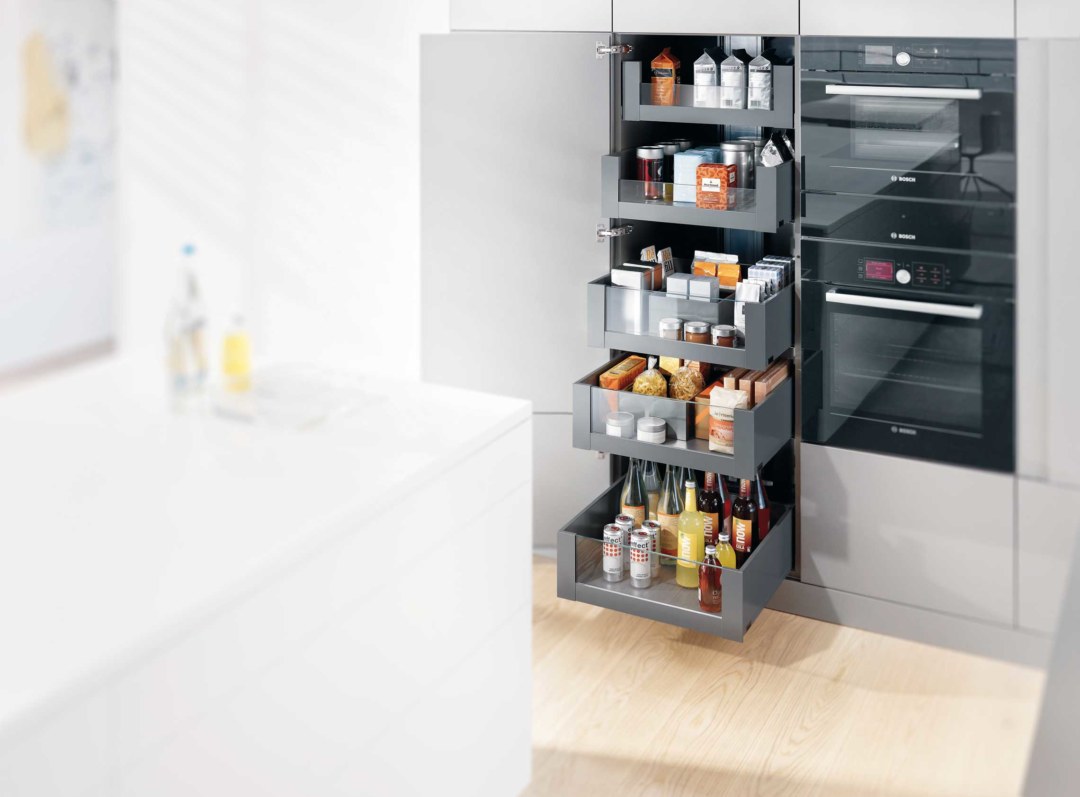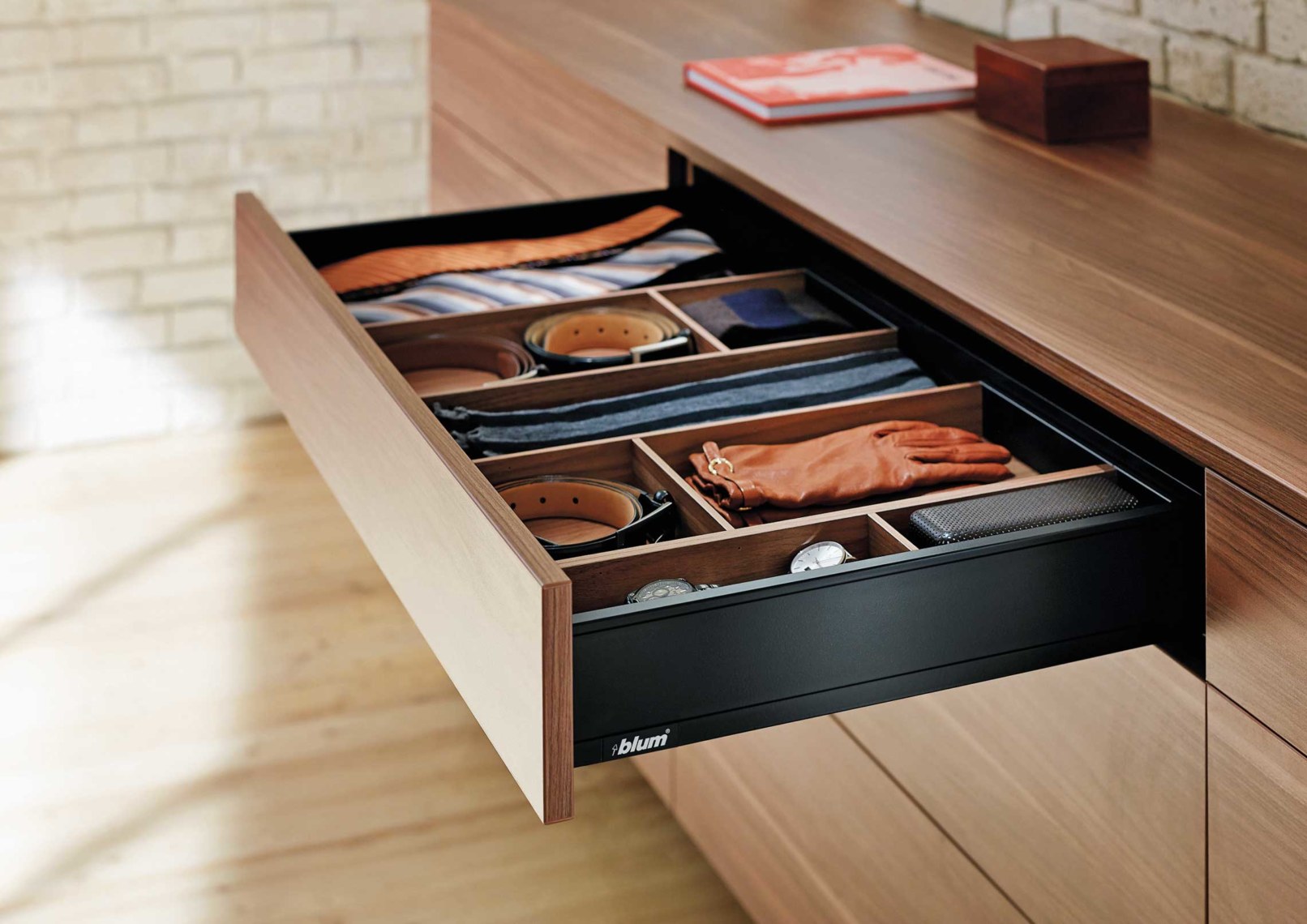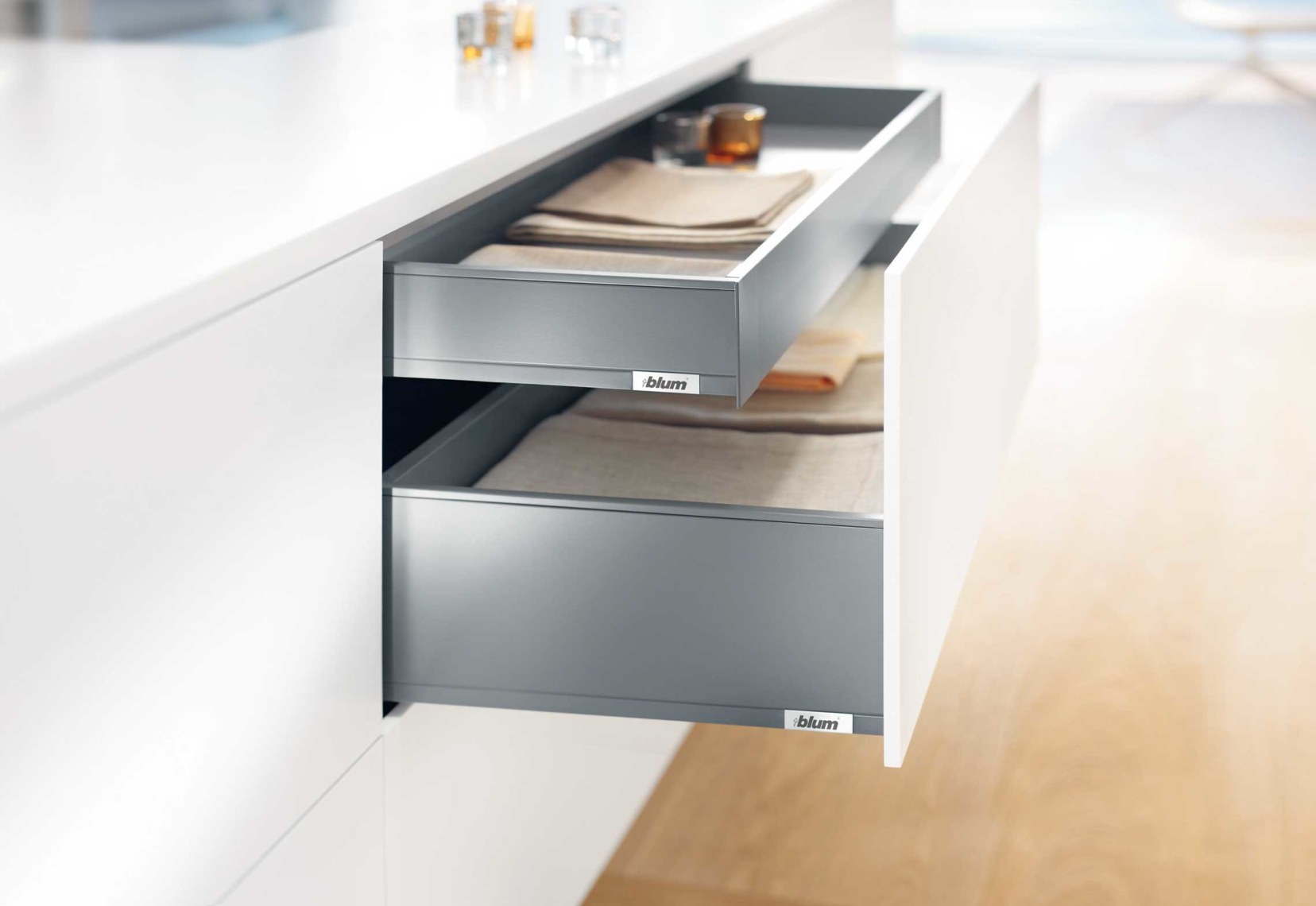Hidden world champion
Blum’s innovations make it one of the world’s hidden champions. These are companies that are world leaders in their fields without that fact being well known. Blum is a champion in the cabinet fittings sector, with an extremely dedicated staff of tinkerers and innovators. It is precisely this ability to constantly develop new products to meet customer needs that Gerhard Blum—who runs this second-generation family company together with his brother Herbert—sees as a key factor in success.
Feedback from users from around the world has led to ideas for practical kitchen fittings. These include runners on which drawers appear to hover, systems that make it easy to access the furthest corners of drawers, hinges that enable doors to close quietly, and easy-opening systems for cabinets high on the wall.
Fitted with electric drives, drawers and cabinets open at a touch.
With a damper system that lets drawers, cabinets, and doors close softly and gently, Blum won the European Inventor Award in 2013, the leading prize in Europe for innovators. Blum channels four percent of its revenue every year to research and development, and holds around 1,200 patents worldwide. The Austrian Patent Agency granted the company 52 patents and utility patents in 2013 alone. This puts Blum in second place on the alpine republic’s ranking of inventors.
Another important factor in the company’s success has been the expansion of its worldwide market organization. Nearly thirty subsidiaries have been founded around the globe since 1977, including Germany, the USA, Brazil, New Zealand, and China, and more than 120 markets are supplied.
The backbone is and will remain the company’s headquarters in Vorarlberg, however, with seven factories in and around Höchst. Good skilled workers, good infrastructure, and good partners are the reasons for this. These factors—as well as the quality and reliability of the suppliers—are valued very highly by the family-run company.
Wörwag has been one of these suppliers for nearly forty years now. “A very committed and expert partner, with whom we have developed and optimized many products together,” says Albert Kaufmann from Blum’s quality assurance department. As an expert in developing surfaces with high-protection coatings, special effects, and paints, Wörwag supplies powder coatings for frames, runners, and rear walls of drawer systems such as Metabox, Tandembox, and the newly developed Legrabox.
Since 1977 nearly 30 subsidiaries have been founded around the globe. More than 100 markets are served.
Blum does not use liquid coatings but rather only powder variants. “Matt, achromatic tones such as sand silver, palladium gray, and carbon black are preferred,” says Regina Neubauer, who directs Wörwag’s customer lab.
Bright colors are reserved for the fronts. As for the insides, a premium is placed on functionality and robustness. Here it is especially important that the surfaces be resistant to scratches, wear, and corrosion. Wörwag develops these properties further on a continuous basis. “Smooth, dark surfaces are especially challenging,” adds Yvonne Brand, who directs the development work on decorative powder coatings.
A company like Blum, which places a high priority on responsible treatment of the environment, is also very interested in improving its energy efficiency by means such as reducing the curing temperatures of its coatings. According to its mission statement, the company is convinced that environmentally compatible policies are economically sound over the long term, and therefore takes steps to preserve the environment in as many areas as possible.
Blum has been consistently improving its energy balance over decades, using methods such as heat recovery, building insulation, conduction systems, groundwater cooling, and low-energy lighting. Via its own terminal in Dornbirn, the company transfers a large part of its delivery volume from road to rail transportation. So it’s no wonder that late last year it could impress a visitor who has seen quite a number of companies over the course of his career: former German chancellor Gerhard Schröder. As he put it, “What I saw at Blum is exemplary. What they’re doing deserves respect.”

Yvonne Brand
started directing the development of decorative powder coatings in May 2011 for products such as furniture and appliances. Among other things she values the variety in her job: “Every day I face the challenge of developing new products, while as director I also coordinate the individual projects.”
Text: Alexander Günzler
Photos: Julius Blum GmbH, Boris Schmalenberger




